Visit Sakya Monastery In Tibet For A Spiritual Journey In 2026
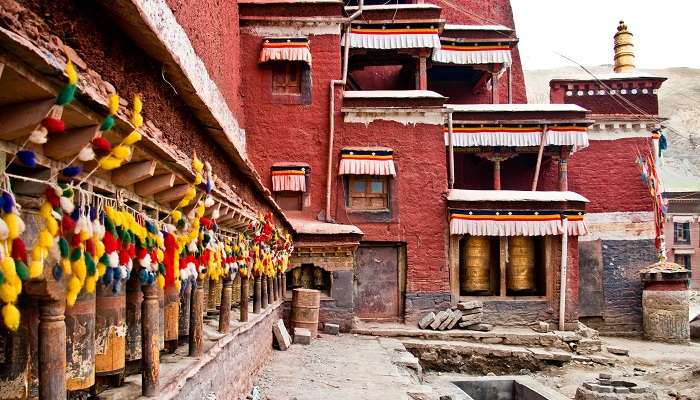
Sakya Monastery is situated in Tibet. Though the monastery is primarily known as a critical figure in Tibetan Buddhism, it contains innumerable resources, such as old scriptures and goddess images, among other religious artefacts. Its unconventional colours are a mixture of white and ash-grey meant to represent unification among the Buddhist schools, a fact that is charming in the historical development of Sakya Monastery. This article will explore the Sakya Monastery’s rich history, architecture, and cultural importance. It is aimed at helping visitors, and those seeking spiritual growth gain insight into this place.
History Of Sakya Monastery
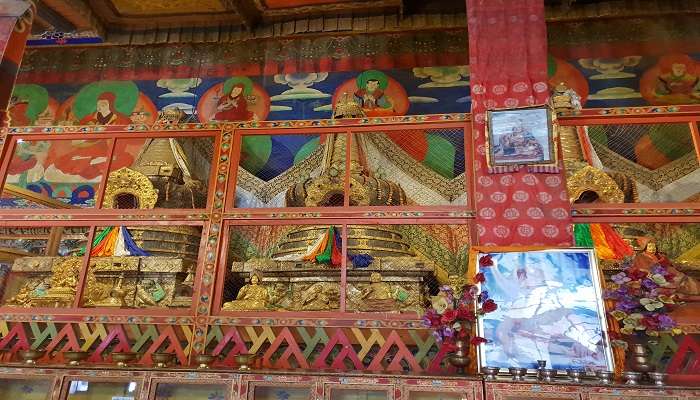
Sakya Monastery, established by Khön Könchok Gyalpo in 1073, is one of the most critical places in Tibetan Buddhism and the headquarters of the Sakya school. Its foundation introduced a new period in Tibetan religions, marked by the integration varied Buddhist streams. This place prospered in the period when Sakya Pandita and Phagpa, who were highly praised characters in Tibet’s history, guided it. Phagpa was the person who made the Sakya sect great as a spiritual and political leader in Tibet under Kublai Khan’s reign. This historical place is prominent because many old manuscripts are preserved for centuries, dating back to the 11th century.
Sakya Monastery is a testament to the enduring spirit of Tibetan Buddhism. The ongoing restoration work on this site is indicative that the monastery remains strong because it tries so much not just for today but also for tomorrow’s children when they grow up so that they do not forget their own culture. Sakya Monastery is more than just a place to worship – it’s a vibrant community of learning where scholars, monks, and travellers from around the globe converge to delve into its rich spiritual heritage and historical depth.
Must Read: Losar Tibetan New Year
Accommodation Options Near Sakya Monastery

Guesthouses, inns, and lodges offer lodging close to the Sakya Monastery in Tibet. A stay in a guesthouse involves sharing a bathroom and using a simple one, allowing one to interact with other travellers and residents. Alternatively, mid-range accommodations with Wi-Fi connections, en-suite bathrooms, etc., can be found within walking distance from the monastery.
Due to the limited availability of lodging during peak tourist times, tourists should make reservations well ahead of time. Whether one prepares for a peaceful vacation at one of the guest houses preferred by those who want real experiences or look forward to some more luxurious relaxation at one of the three-star hotels- everything has to be planned so that one’s stay will be enjoyable, tranquil sceneries at Sakya Monastery.
Tourist Attractions Near Sakya Monastery
Here are some of the best tourist attractions near Sakya Monastery:
1. Lhatse Dzong
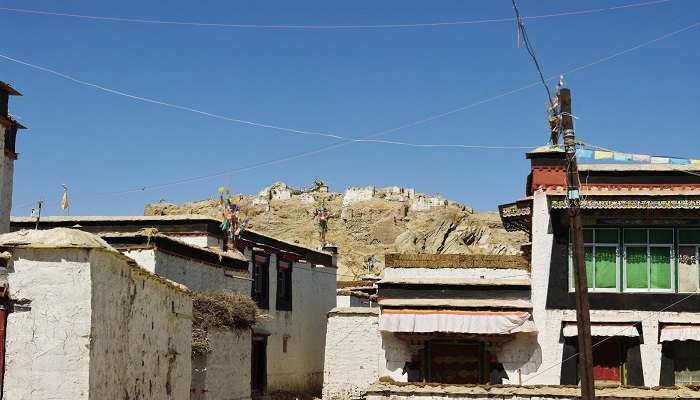
Lhatse Dzong, also known as Lhatse Fortress, is located very close to Sakya Monastery in Tibet. It provides historical guidelines and scenic beauty. It lies on a hilltop structure that strategically faces the village of Lhatse. This fort-monastery combination has been there for many years now, so it is one of the significant sites regarding Tibet’s feudal period.
Distance from Sakya Monastery: 30 km
Entry Fees: None.
Timings: Open 24/7.
Suggested Read: Danyang Kunshan Grand Bridge
2. Gyantse
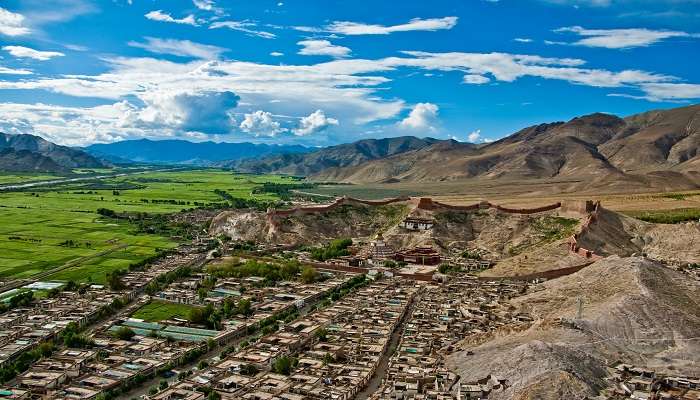
The rich cultural heritage and historic sites make Gyantse renowned in China’s Tibet Autonomous Region. The main attractions are the ancient fortress Gyantse Dzong which provides a panoramic view of the entire city, and its Pelkor Chode Monastery, such as the iconic Kumbum Stupa, one of the most remarkable pieces of Tibetan religious art ever created. Typically, entrance costs are unaccounted for in most of the main visiting sites in Gyantse town, with their ordinary visitation hours usually starting early in the day and ending between three and four pm. This gives explorers ample time to go into those places comprising significant antiquities.
Distance from Sakya Monastery: approximately 250 kilometres northeast of Sakya Monastery.
Entry Fees: None.
Timings: Open 24/7.
3. Simi La Pass

Simila Pass, about 60 kilometres west of Sakya Monastery in Tibet, is a very high mountain pass with a stunning, breathtaking panoramic view of the surrounding peaks and valleys. It is widely visited as people trek, photograph, or enjoy the natural beauty of the Tibetan plateau. This high-altitude area is for everyone and can be visited at any time without charges, although the best time to come is during the spring or autumn seasons when there are no harsh weather conditions.
Distance from Sakya Monastery: 60 kilometres west of Sakya Monastery in Tibet
Entry Fees: None.
Timings: Open 24/7.
Suggested Read: Monasteries In Hong Kong
How To Reach Sakya Monastery
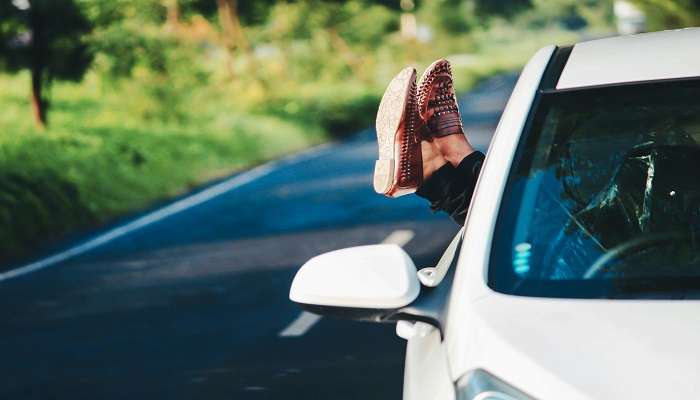
To reach Sakya Monastery, travel through Tibet’s picturesque sceneries that combine adventure and spiritualism. The monastery is located in Shigatse Prefecture, about 127 kilometres west of Shigatse city. The journey can begin in Lhasa, the capital city of Tibet, which has good flight and train connections to major Chinese cities. From Lhasa, you could take a bus or get a private car hire to Shigatse, which usually lasts a 5-6 hour drive.
Starting from Shigatse, you can reach Sakya Monastery by road. The trip takes about 2-3 hours by bus or taxi. On the way, you’ll have a chance to stop and enjoy the natural beauty of the Tibetan plateau since there are many attractive scenes along this route. If you want to dig deep into its history and culture, you should take guided tours around the place. It is essential to mention that high altitude acclimatisation is necessary to have a good time there.
Travel Tips For Tourists
There are several vital considerations that one should take note of when planning to visit Sakya Monastery in Tibet.
- Firstly, obtaining the necessary Tibet permits is mandatory because Sakya Monastery is situated within a restricted area.
- To gain detailed insights into the monastery’s history, architecture, and cultural importance, it is recommended that one opt for guided tours.
- Pay attention to the monasteries’ photography regulations. Some areas may have restrictions, while others may require prior permission.
- Since the monastery is at a high altitude, precautions should be considered accordingly.
- One should also become accustomed to the culture of the locals by observing and practising their customs.
Further Read: Things To Do In China
Now that you have a list of things to remember for your next vacation to witness the serene places of Tibet, plan your customised trip to Bhutan to visit these fabulous spots for the experience of a lifetime. Don’t miss out on these opportunities; book your tickets now!
For our editorial codes of conduct and copyright disclaimer, please click here.
Cover Image Credit: Antoine Taveneaux for Wikimedia Commons
Frequently Asked Questions About Sakya Monastery
Are there any festivals celebrated at Sakya Monastery?
Yes, Sakya Monastery celebrates many religious festivals throughout the year, such as Losar (Tibetan New Year) and the Sakya Dungsey Monlam Chenmo (Great Prayer Festival).
Can I stay overnight at Sakya Monastery?
Though the monastery does not offer accommodation, guesthouses and small hotels are available nearby.
Is there any entry fee for visiting Sakya Monastery?
Currently, there are no specific entry fees for visiting Sakya Monastery. However, hiring a guide requires a small amount.
Which is the shortest way to reach Sakya Monastery?
Sakya Monastery is located in Sakya County, about 160 kilometres southwest of Shigatse. Visitors can travel by bus or hire a car from Shigatse.
How long does it take to visit Sakya Monastery?
It generally takes approximately 2-3 hours to visit Sakya Monastery.
People Also Read:
Nechung Monastery Sherabling Monastery Namgyal Monastery

As a Travel Content Writer, I live to conquer the world of globetrotting with words. With my unquenchable thirst for storytelling, I believe that my words will inspire you to travel around the world’s breathtaking landscapes. As for me, I am an unapologetic selenophile, who loves to wander around in a starry night!











